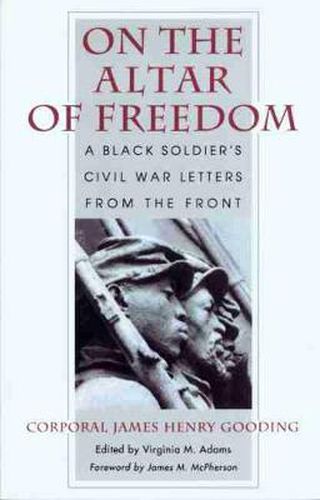Readings Newsletter
Become a Readings Member to make your shopping experience even easier.
Sign in or sign up for free!
You’re not far away from qualifying for FREE standard shipping within Australia
You’ve qualified for FREE standard shipping within Australia
The cart is loading…






On February 14, 1863, twenty-six-year-old seaman James Henry Gooding volunteered to serve in the Massachusetts 54th, the first regiment of black soldiers ever recruited for the Union army. Over the next twelve months, he posted a series of remarkable letters from the front to his hometown newspaper, the staunchly abolitionist New Bedford Mercury. Written with insight and literary flair, his letters provide a vidid portrait of the war as seen through the eyes of a black volunteer. From basic training at Camp Meigs in Readville, Massachusetts, through campaigns in Georgia, South Carolina, and Florida, Gooding faithfully records the activities of the 54th, including the legendary storming of Fort Wagner. He also voices the injustice felt by soldiers of his regiment over the issue of unequal pay, the refusal to promote deserving black enlistees to officer rank, and the deeply ingrained racism of whites in both the North and South.
Wounded and captured during the battle of Olustee, Florida, in February 1864, Gooding died later that year in Andersonville Prison.
In her introduction, Virginia M. Adams provides biographical details on Gooding’s life and examines the antebellum history of New Bedford’s large and articulate community of free blacks.
$9.00 standard shipping within Australia
FREE standard shipping within Australia for orders over $100.00
Express & International shipping calculated at checkout
On February 14, 1863, twenty-six-year-old seaman James Henry Gooding volunteered to serve in the Massachusetts 54th, the first regiment of black soldiers ever recruited for the Union army. Over the next twelve months, he posted a series of remarkable letters from the front to his hometown newspaper, the staunchly abolitionist New Bedford Mercury. Written with insight and literary flair, his letters provide a vidid portrait of the war as seen through the eyes of a black volunteer. From basic training at Camp Meigs in Readville, Massachusetts, through campaigns in Georgia, South Carolina, and Florida, Gooding faithfully records the activities of the 54th, including the legendary storming of Fort Wagner. He also voices the injustice felt by soldiers of his regiment over the issue of unequal pay, the refusal to promote deserving black enlistees to officer rank, and the deeply ingrained racism of whites in both the North and South.
Wounded and captured during the battle of Olustee, Florida, in February 1864, Gooding died later that year in Andersonville Prison.
In her introduction, Virginia M. Adams provides biographical details on Gooding’s life and examines the antebellum history of New Bedford’s large and articulate community of free blacks.